Variation in Micro-Pores during Dynamic Consolidation and Compression of Soft Marine Soil
Abstract
:1. Introduction
2. Materials and Methods
2.1. Test Materials
2.2. Test Instrument
- (1)
- The automatic consolidation and expansion test instrument consisted of a pressure chamber, acquisition system, computer, and other components, as shown in Figure 2. The sample was installed in the pressure chamber. After setting the test conditions, the sample cyclic loading test was performed through the built-in control panel to collect the readings from the force and displacement sensors, controlling the stepper motor, and with the high-speed and accurate micro-stepper motor imposing a vertical load on the sample.
- (2)
- In this study, a QUANTA FEG 650 field emission scanning electron microscope (FEI company, Eindhoven, The Netherlands), depicted in Figure 3, was used to study the pores of the soft marine soil. An SEM is primarily composed of vacuum, electron beam, and imaging systems. The electron beam system emits high-energy incident electrons to bombard the material surface, producing secondary and backscattered electrons, which are received by the probe for imaging.
2.3. Test Plan
2.3.1. Dynamic Consolidation Compression Test
2.3.2. SEM Test
- (1)
- A total of 17 groups of undisturbed soft marine soil samples under different test conditions were obtained for drying treatment. A horizontal section of the sample was selected as the observation surface. When the soil sample was in a semi-solid state, we selected the core of the sample to cut into strips with a 5 × 1 × 1 cm cross-section. Then, drying was continued.
- (2)
- After drying, to ensure that the observation section was not disturbed, the samples were cut into 5 × 5 × 2 mm microscopic samples and polished. Then, we used a washing ear ball to blow away loose floating particles.
- (3)
- Before scanning, due to the poor electrical conductivity of the soft clay, to ensure the quality of the micro-images, we coated the dry soil surface with a layer of 20–50 nm gold film as a conductive material.
2.4. Image Acquisition
2.5. SEM Image Processing
3. Qualitative Analysis of the Microstructure of Soft Marine Soil under Cyclic Loading
4. Quantitative Analysis of the Microstructure of Soft Marine Soil under Cyclic Loading
4.1. Introduction of Microstructure Parameters
- (1)
- Diameter (D) is the most basic characteristic of pore size. The pore diameter is the average length of two points on the edge of the pore profile passing through the centroid, which can be directly measured using IPP.
- (2)
- Area (S) is also a basic characteristic of pore size. The pore area is the area surrounded by the edge of the pore profile, which can be directly measured using IPP.
- (3)
- Roundness (R0) is used to describe how close the target shape is to a circle. Roundness is calculated as:where S is the area of the pores, and L is the perimeter of the pores. The smaller the R0, the closer the pore to a circle.R0 = L2/(4πS),
- (4)
- Directional frequency (Pi(α)).To represent the variation in the distribution intensity of the unit in a certain direction, we divided 0°~180° into N equal parts (locations). The angle range of each location representing the direction is α = 180°/N. Thus, the directional distribution frequency of the ith location unit in N locations within 0°~180° can be calculated:where mi is the number of the elliptic elements in the ith location in the long-axis direction, M is the total number of elements or pores, and α is the number of locations. By changing α, different frequency distributions can be obtained. In this study, we selected α = 10°.
- (5)
- Probability entropy (Hm).Shi et al. [24] introduced the concept of probabilistic entropy in modern system theory to the study of microstructures and used Hm to represent the ordered arrangement of soil microstructure units, as defined in Formula (3):where Hm is an effective expression of the order of the unit body distribution. The smaller the Hm, the higher the ordering of the arrangement of unit bodies. First, IPP software required spatial calibration before using [25]. We adopted a magnification of 8000×, so that a uniform reference spatial calibration could be used. In addition, due to the difference in the uniformity of light and gold plating during the photographing process, there were inevitably some isolated spots and flaws in the image. To eliminate the influence of solitary points, flaw points, and micro-pores on the test data, the starting value of pore diameter counting was set to 0.03 μm.
4.2. Pore Equivalent Diameter Distribution
4.3. Pore Area Distribution
4.4. Pore Roundness
4.5. Directional Frequency
4.6. Probability Entropy
5. Conclusions
- (1)
- Before cyclic loading, the microscopic images of soft marine soil show flocculation and a honeycomb flocculation structure. The aggregates are mostly flocculent, and the pores between particles are large, forming a local weakening area. After cyclic loading, the macropores decrease, and the structure becomes denser. The fragmentation of large particles and the aggregation of small particles occur simultaneously, and the aggregate structures of soil particles are inlaid with each other.
- (2)
- After cyclic loading, the large pores are squeezed and broken, resulting in decreases in pore diameter and pore roundness, and an increase in uniformity. At this time, the internal structure of soft marine soil gradually stabilizes. With increases in p0, ζ, and OCR, the compression effect of the soil is more obvious, and the degree of change in the above microstructure parameters is larger.
- (3)
- After cyclic loading, the directional frequency Pi (10) of the pores in a certain location at 0° to 180° increases significantly. This shows that, after loading, the pores in soft marine soil develop in a certain direction, giving the pores directional property. As the consolidation confining pressure, cyclic dynamic stress ratio, and over-consolidation ratio increase, the porosity probability entropy decreases. This shows that, after loading, the pores of the soft marine soil become more orderly, and the strain growth also increases. The microscopic test results further verify the macroscopic strain law.
Author Contributions
Funding
Institutional Review Board Statement
Informed Consent Statement
Data Availability Statement
Conflicts of Interest
References
- Wang, C.J. Research on Dynamic Stress and Saturated Soft Clay Characteristics of Foundation under Moving Trainload. Ph.D. Thesis, Zhejiang University, Hangzhou, China, 2006. [Google Scholar]
- Gong, S.L. Study on micro-properties of Shanghai soft clay and its effect on soil deformation and land subsidence. J. Eng. Geol. 2002, 10, 378–384. [Google Scholar]
- Cheng, Z.; Wang, J.F. Mini-triaxial tester for micro-mechanical behavior test of granular soil. Rock Soil Mech. 2018, 39, 1123–1129. [Google Scholar]
- Hu, R.L.; Li, X.Q. The key points of engineering geology students in the 21st century: Soil microstructure mechanics. Hydrogeol. Eng. Geol. 1999, 26, 5–8. [Google Scholar]
- Zheng, Q.Q. Study on Macro and Micro-Dynamic Characteristics of Hangzhou Silty Soft Clay under Intermittent Cyclic Loading. Ph.D. Thesis, Zhejiang University, Hangzhou, China, 2019. [Google Scholar]
- Xue, R.; Hu, R.L.; Mao, L.T. Fractal study of microstructure change in soft soil reinforcement process. China Civ. Eng. J. 2006, 39, 87–91. [Google Scholar]
- Sun, W.J.B.; Zuo, Y.J.; Wu, Z.H.; Liu, H.; Xi, S.J.; Shui, Y.; Wang, J.; Liu, R.B.; Lin, J.Y. Fractal analysis of pores and the pore structure of the Lower Cambrian Niutitang shale in northern Guizhou province: Investigations using NMR, SEM, and image analyses. Mar. Petrol. Geol. 2019, 99, 416–428. [Google Scholar] [CrossRef]
- Miyata, T.; Endo, A.; Ohmori, T.; Akiya, T.; Nakaiwa, M. Evaluation of pore size distribution in a boundary region of micropore and mesopore using gas adsorption method. J. Colloid Interface Sci. 2003, 262, 116–125. [Google Scholar] [CrossRef]
- Zhang, Z.L.; Cui, Z.D. Effects of freezing-thawing and cyclic loading on pore size distribution of silty clay by mercury intrusion porosimetry. Cold Reg. Sci. Technol. 2018, 145, 185–196. [Google Scholar] [CrossRef]
- Wang, H.M.; Liu, Y.; Song, Y.C.; Zhao, Y.C.; Zhao, J.F.; Wang, D.Y. Fractal analysis and its impact factors on the pore structure of artificial cores based on the images obtained using magnetic resonance imaging. J. Appl. Geophys. 2012, 86, 70–81. [Google Scholar] [CrossRef]
- Zhang, X.W.; Kong, L.W.; Guo, A.G.; Tuo, Y.F. Based on the SEM and MIP test structured clay microscopic pore changes during compression. Chin. J. Rock Mech. Eng. 2012, 31, 406–412. [Google Scholar]
- Griffiths, F.J.; Joshi, R.C. Discussion: Change in pore size distribution due to consolidation of clays. Géotechnique 1990, 40, 303–309. [Google Scholar] [CrossRef]
- Tang, Y.Q.; Zhang, X.; Zhou, N.Q.; Huang, Y. Microscopic study on the properties of saturated soft clay under subway vibration load. J. Tongji Univ. (Nat. Sci. Ed.) 2005, 33, 626–630. [Google Scholar]
- Fang, H.G.; Liu, P.H.; Yuan, Z.G. Analysis of the characteristics of microstructure changes during the consolidation of soft marine soil. Hydrogeol. Eng. Geol. 2007, 34, 49–52. [Google Scholar]
- Zhang, J.R.; Zhu, J.; Huang, L.; Xia, Y.F. Evolution and fractal description of the microscopic pore structure of soft clay under consolidation conditions. J. Hydraul. Eng. 2008, 39, 394–400. [Google Scholar]
- Jiang, Y.; Lei, H.Y.; Zheng, G.; Yang, X.J. Fractal study on microstructure changes of structural soft soils under dynamic loading. Rock Soil Mech. 2010, 31, 3075–3080. [Google Scholar]
- Ding, Z.; Kong, B.W.; Wei, X.J.; Zhang, M.Y.; Xu, B.L.; Zhao, F.J. Laboratory testing to research the micro-structure and dynamic characteristics of frozen–thawed soft marine soil. J. Mar. Sci. Eng. 2019, 7, 85. [Google Scholar] [CrossRef] [Green Version]
- Zhou, C.Y.; Cui, G.J.; Liang, W.Y.; Liu, Z.; Zhang, L.H. A Coupled Macroscopic and Mesoscopic Creep Model of Soft Marine Soil Using a Directional Probability Entropy Approach. J. Mar. Sci. Eng. 2021, 9, 224. [Google Scholar] [CrossRef]
- Zhang, M.Y. Experimental Study on Dynamic Characteristics and Microstructure of Freeze-Thaw Soft Soil under Subway Cyclic Loading. Ph.D. Thesis, Zhejiang University, Hangzhou, China, 2016. [Google Scholar]
- Xu, R.Q.; Xu, L.; Deng, Y.W.; Zhu, Y.H. Tests for measuring the contact area of soft clay based on sem and IPP. J. Zhejiang Univ. (Eng. Sci. Ed.) 2015, 49, 1417–1425. [Google Scholar]
- Bascoul, M. Image analysis: A tool for the characterization of hydration of cement in concrete—Metrological aspects of magnification on measurement. Cem. Concr. Comp. 2001, 23, 201–206. [Google Scholar] [CrossRef]
- Scrivener, K.L.; Patel, H.H.; Pratt, P.L.; Parrott, L.J. Analysis of phases in cement paste using backscattered electron images, methanol adsorption, and thermogravimetric analysis. MRS Online Proc. Libr. 1986, 85, 67–76. [Google Scholar] [CrossRef]
- Wang, S.L. Research on life source pollution clay SEM based on IPP. Build. Mater. Decor. 2019, 564, 242–243. [Google Scholar]
- Shi, B. Quantitative evaluation of the microstructure of cohesive soil during compaction. Chin. J. Geotech. Eng. 1996, 18, 57–62. [Google Scholar]
- Ding, Z.; Hong, Q.H.; Wei, X.J.; Zhang, M.Y.; Zheng, Y. Microscopic test study of artificial freezing and thawing soft soil under subway trainload. J. Zhejiang Univ. (Eng. Sci. Ed.) 2017, 51, 1291–1299. [Google Scholar]
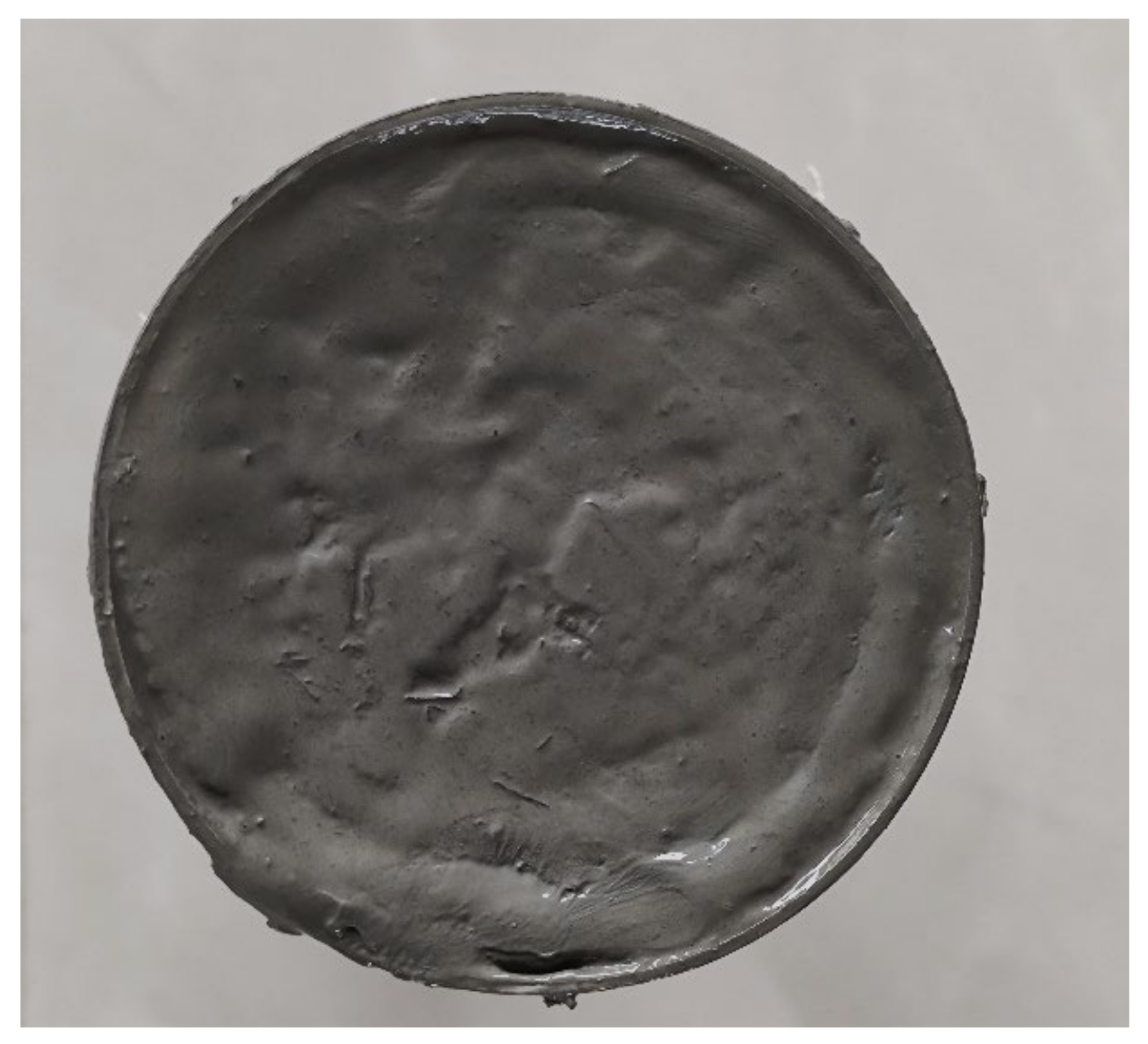

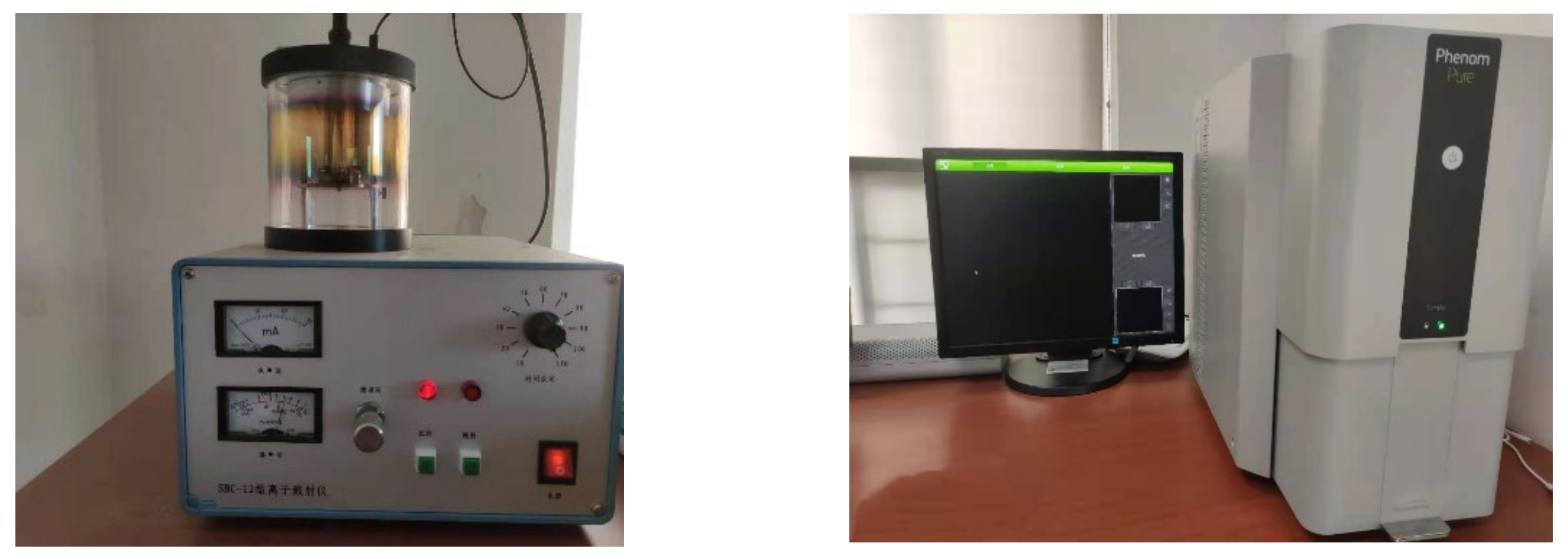
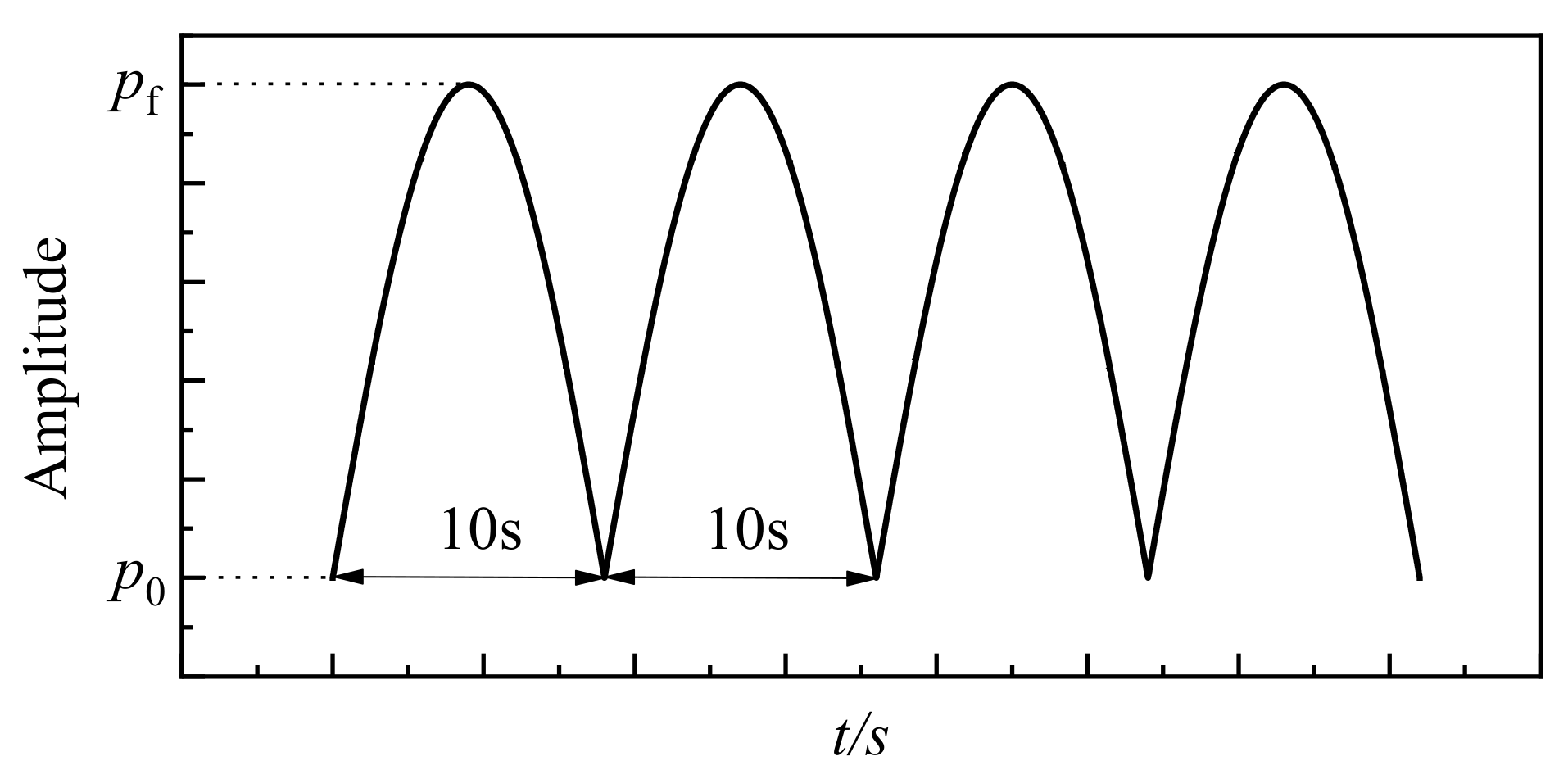

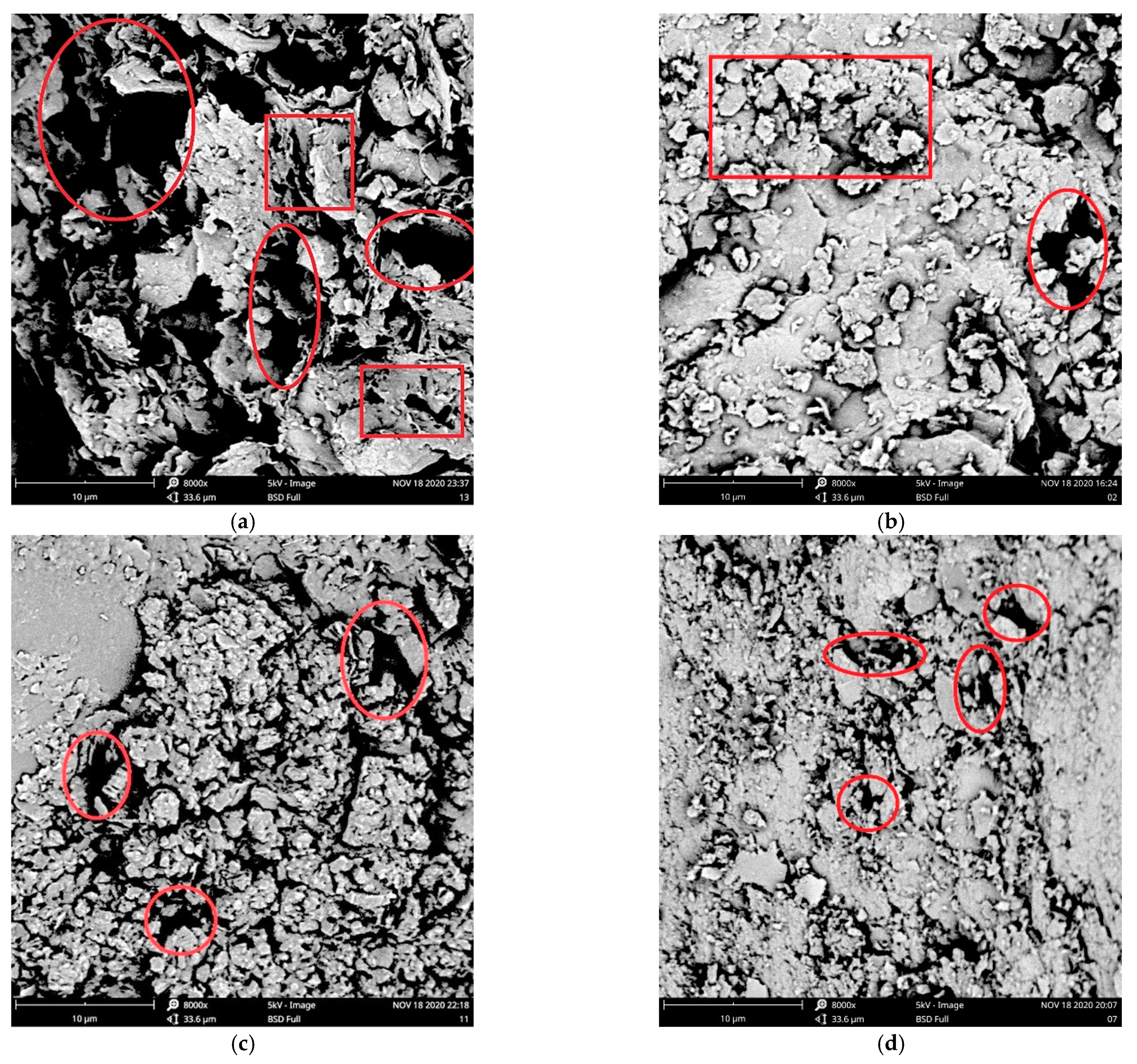
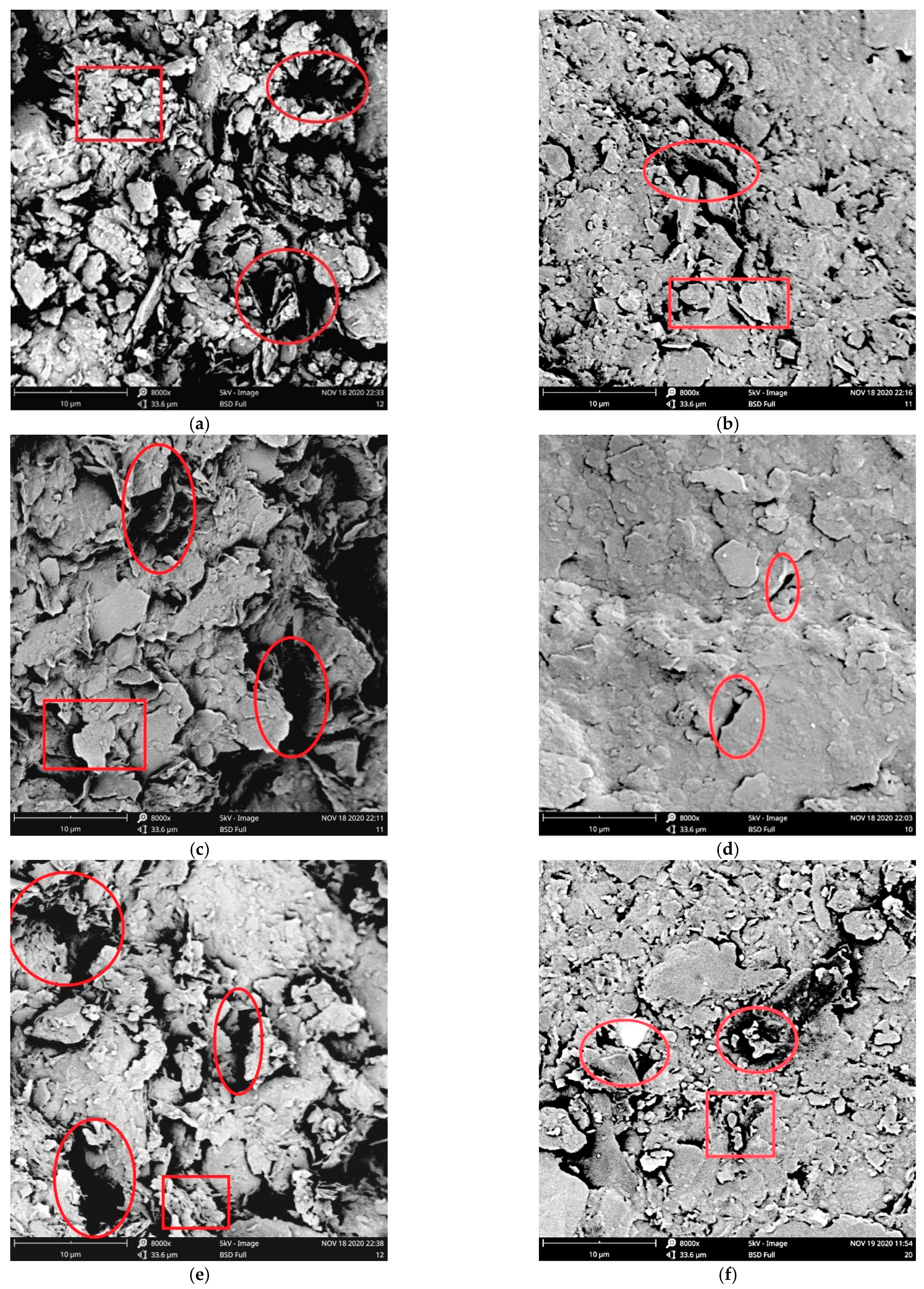
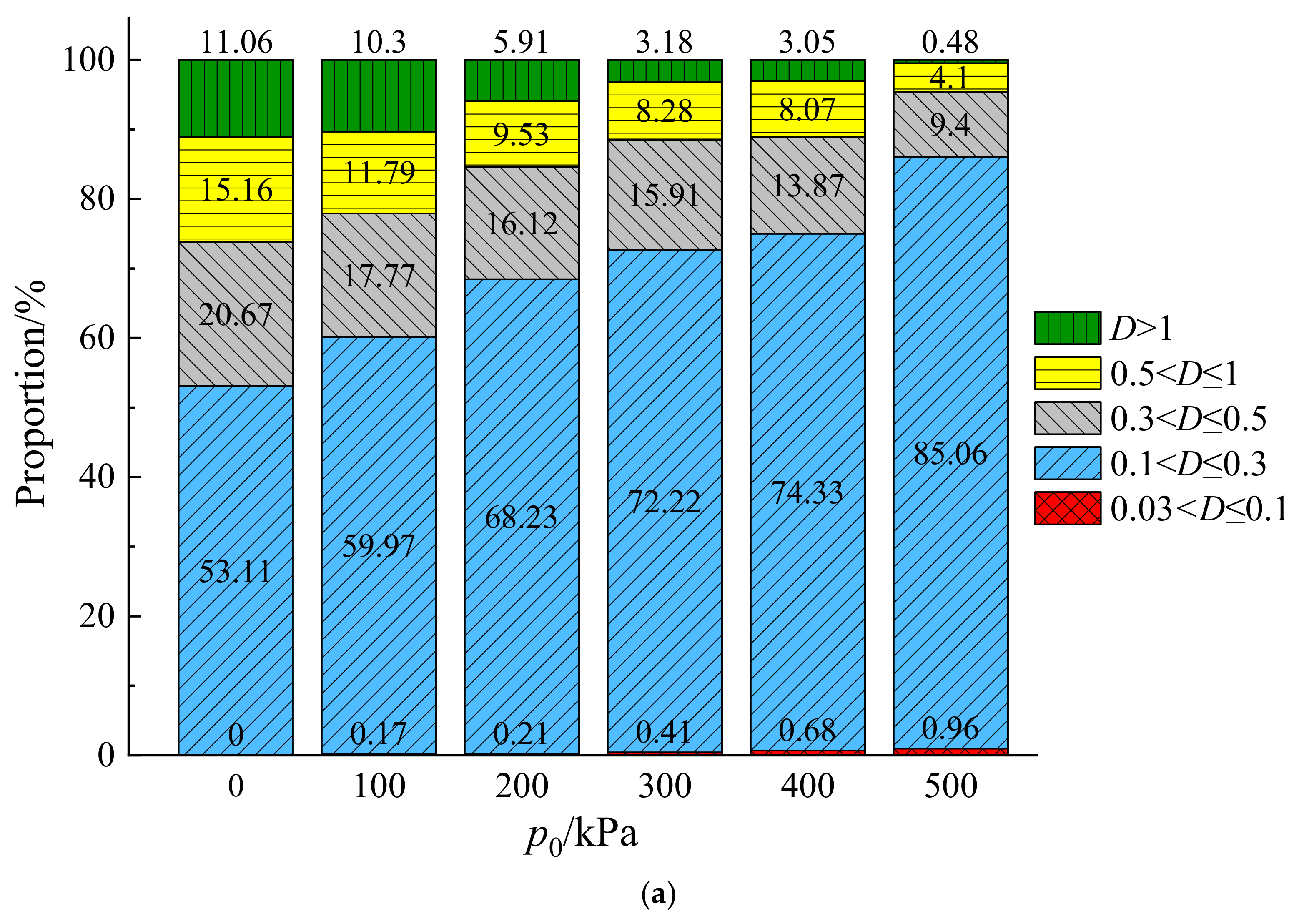

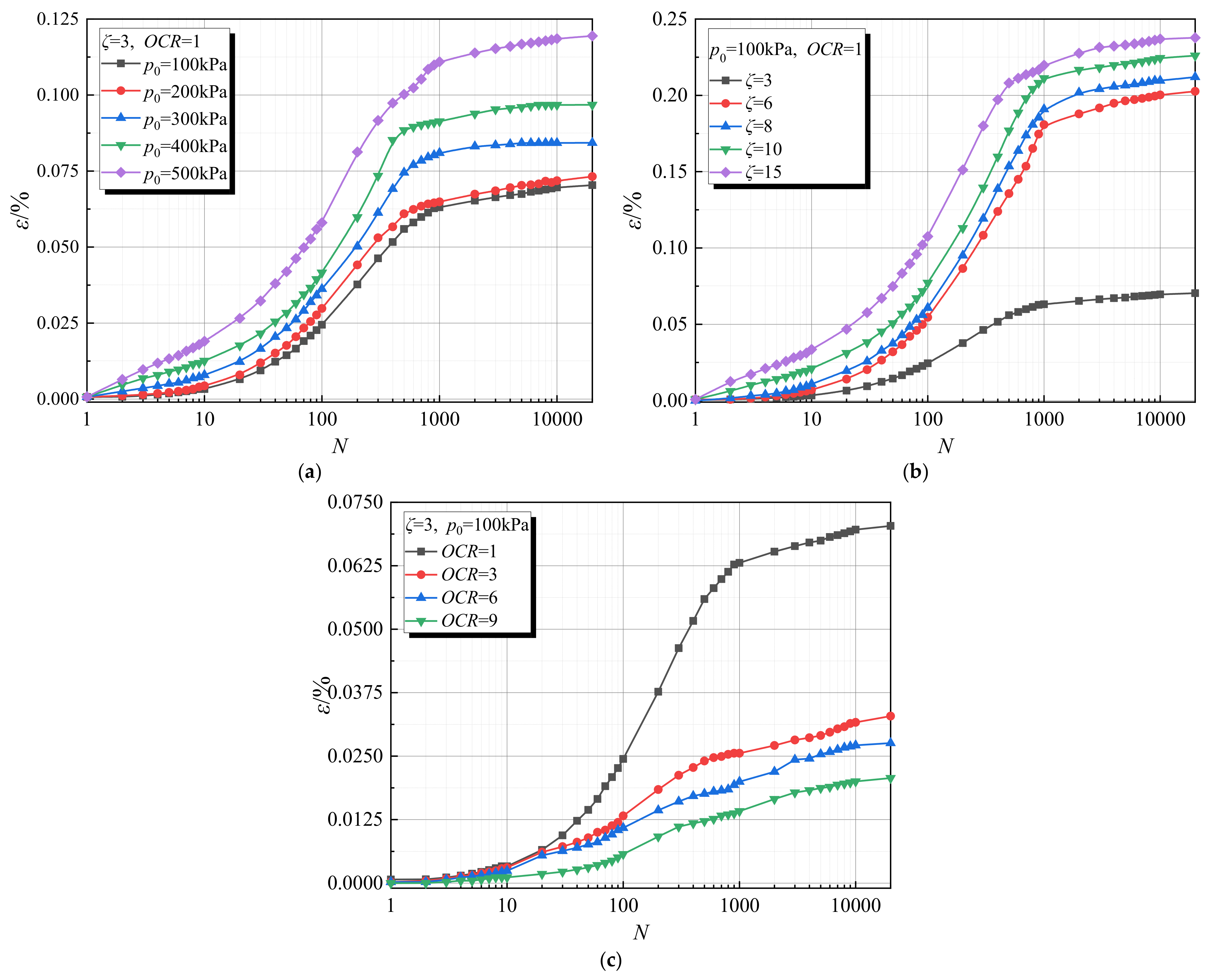

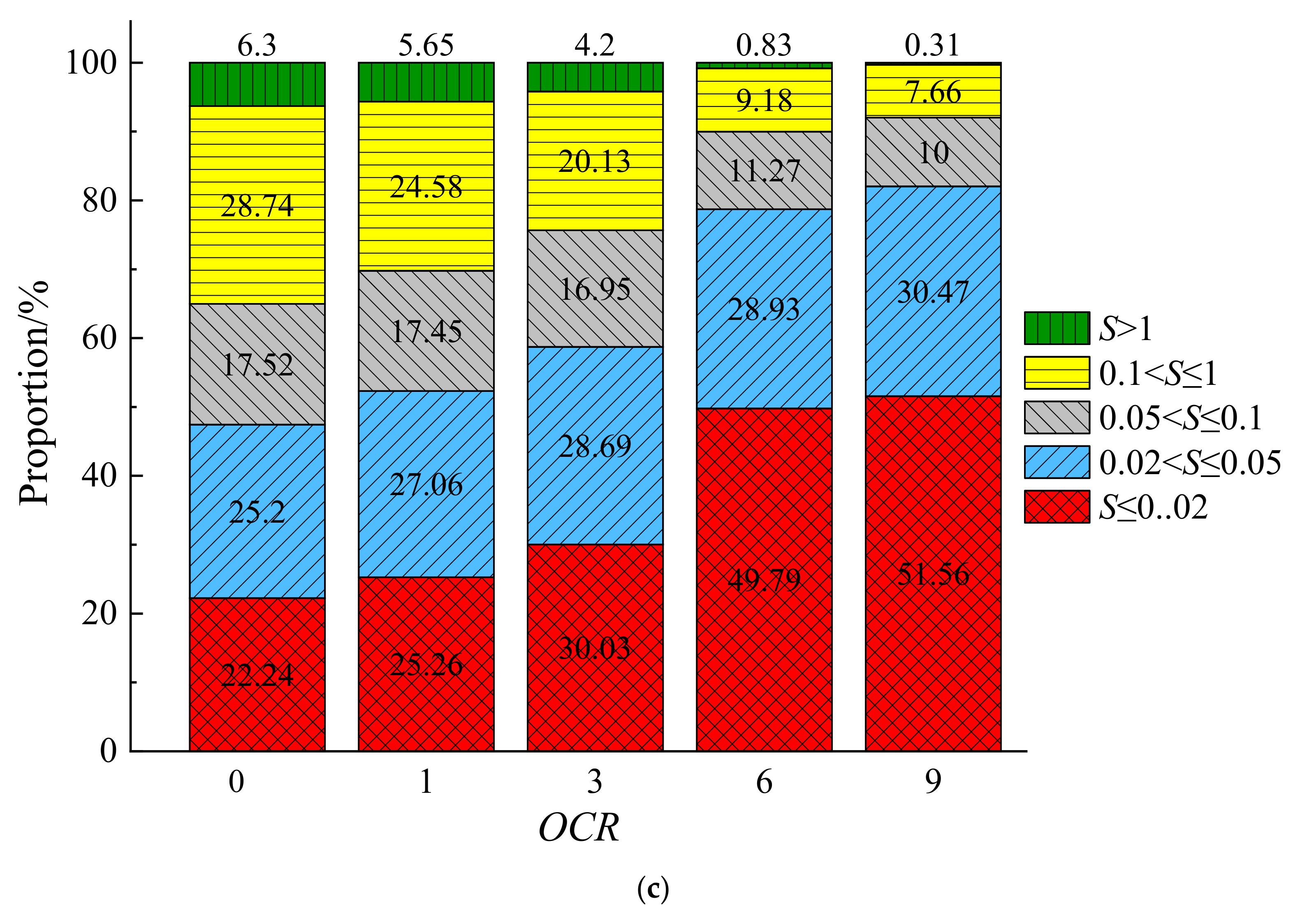

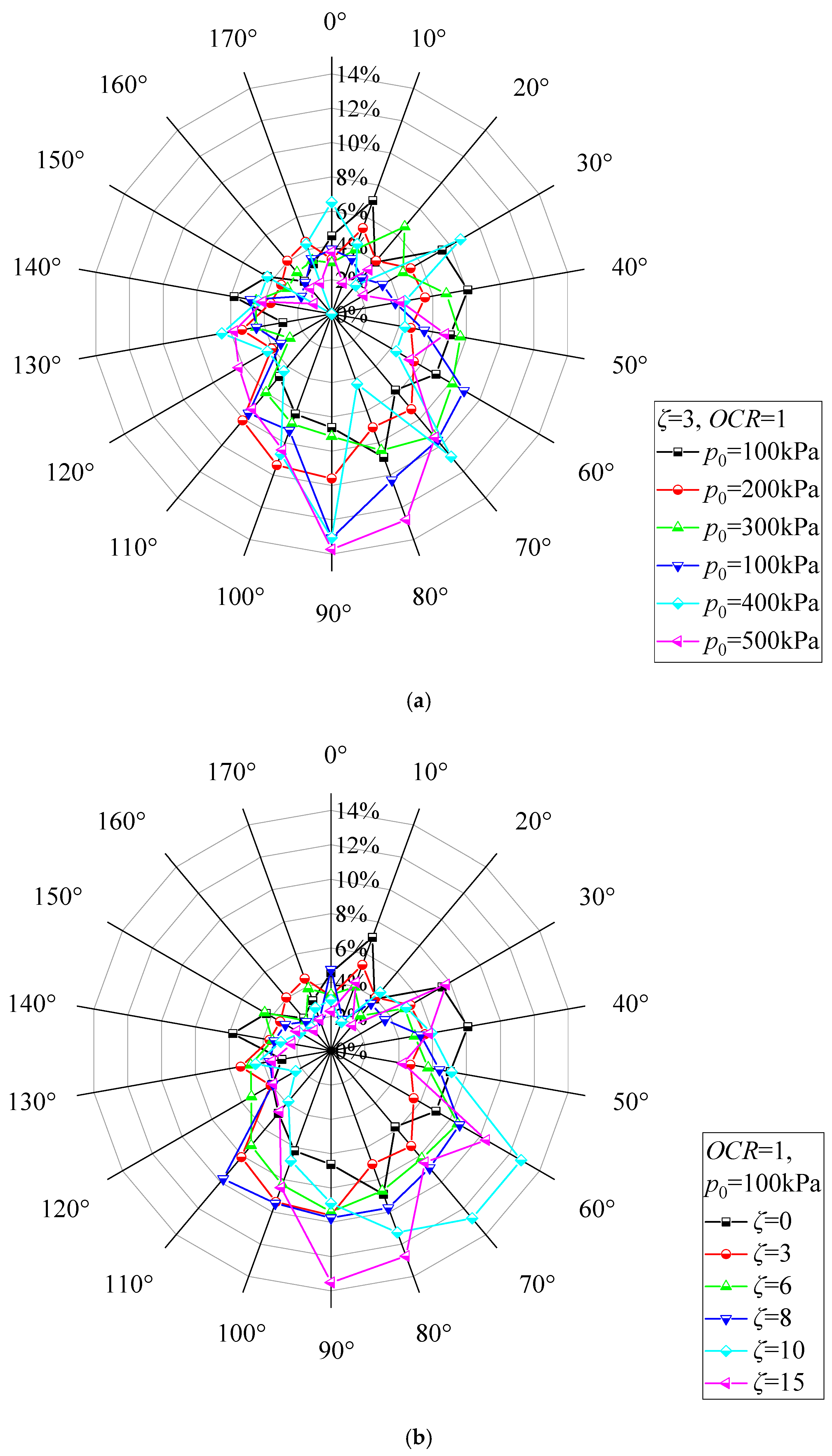
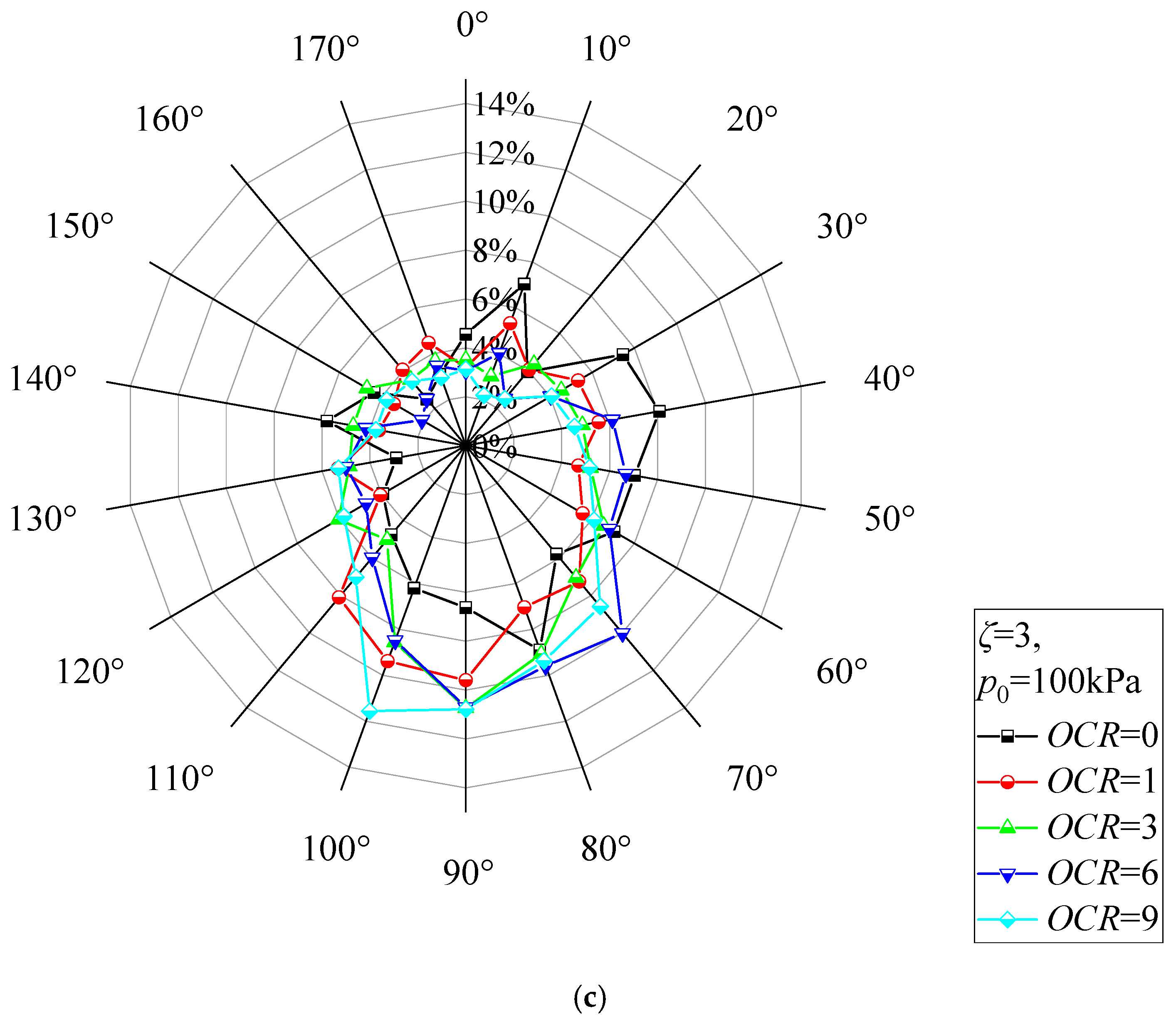
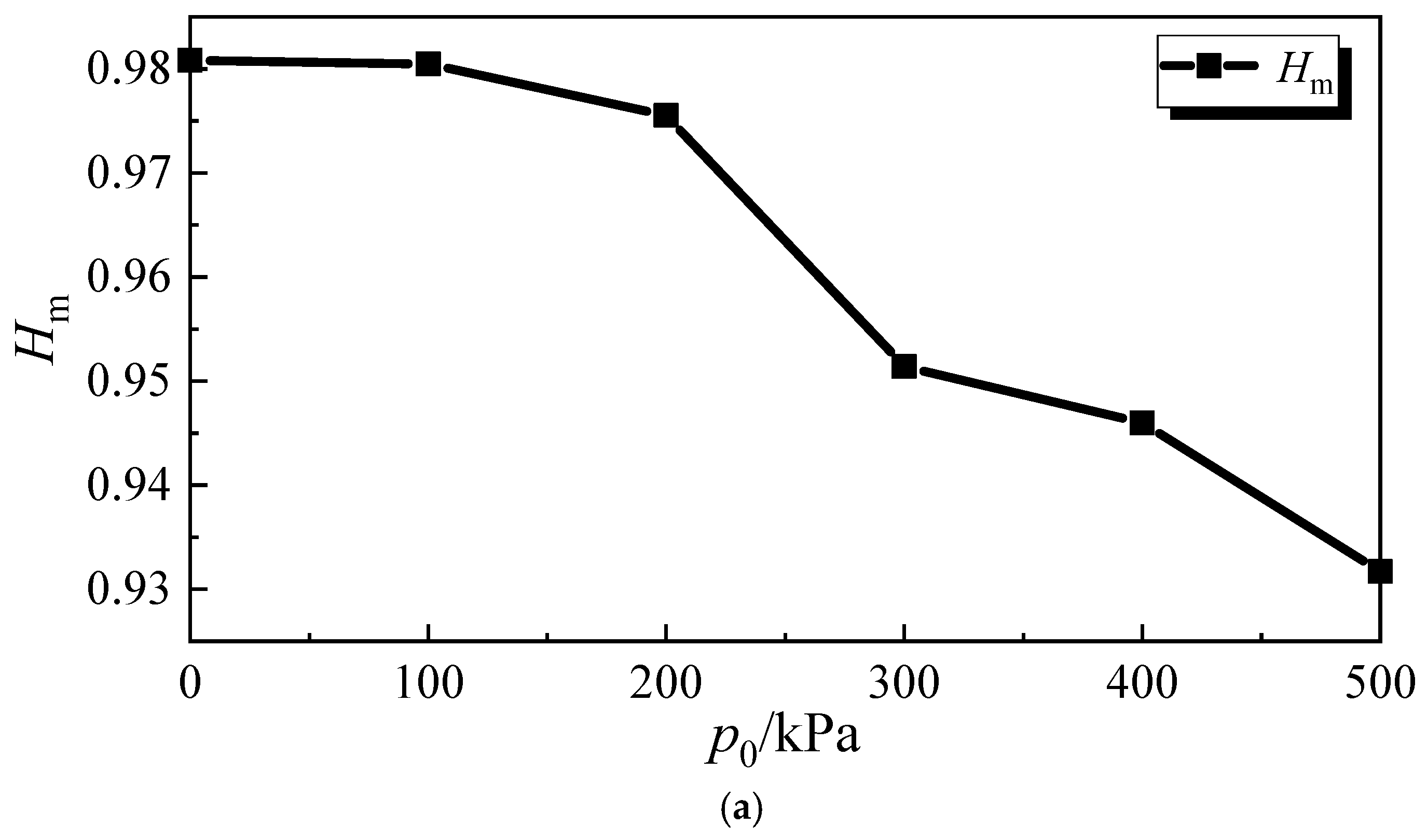
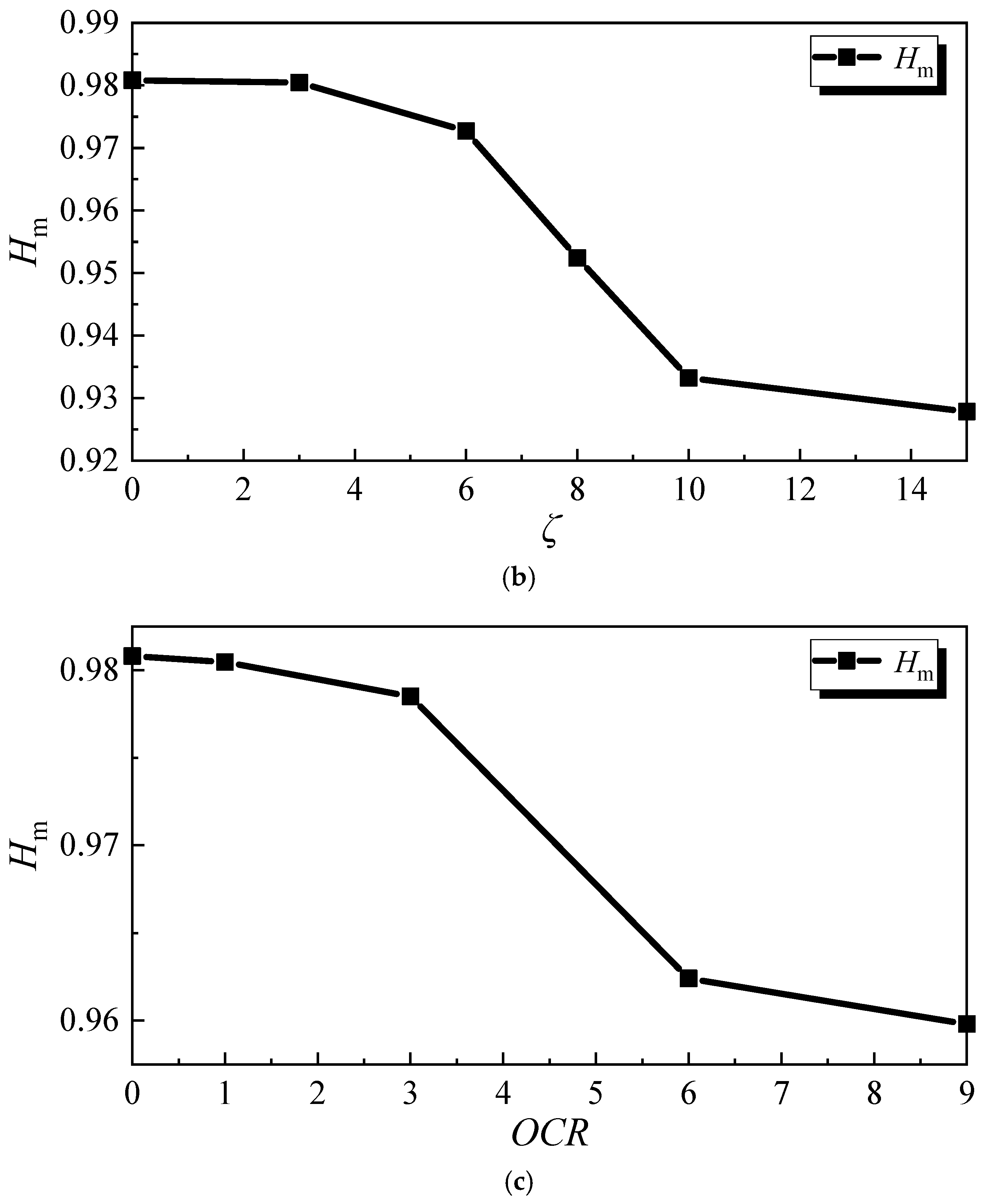
| Weight (kN·m−3) | Moisture Content (%) | Specific Gravity | Plastic Limit | Liquid Limit (%) | Plasticity Index | Liquidity Index | |
|---|---|---|---|---|---|---|---|
| Mean | 15.7 | 62.47 | 2.74 | 27.0 | 44.6 | 17.6 | 2.01 |
| Group | Soil Sample Number | p0 (kPa) | ζ | Number of Vibrations | OCR |
|---|---|---|---|---|---|
| SEM-A | A0 | Undisturbed soft marine soil (unloaded) | |||
| A1 | 100 | 3 | 20.000 | 1 | |
| A2 | 200 | 3 | 20.000 | 1 | |
| A3 | 300 | 3 | 20.000 | 1 | |
| A4 | 400 | 3 | 20.000 | 1 | |
| A5 | 500 | 3 | 20.000 | 1 | |
| SEM-B | B0 | Undisturbed soft marine soil (unloaded) | |||
| B1 | 100 | 3 | 20.000 | 1 | |
| B2 | 100 | 6 | 20.000 | 1 | |
| B3 | 100 | 8 | 20.000 | 1 | |
| B4 | 100 | 10 | 20.000 | 1 | |
| B5 | 100 | 15 | 20.000 | 1 | |
| SEM-C | C0 | Undisturbed soft marine soil (unloaded) | |||
| C1 | 100 | 3 | 20.000 | 1 | |
| C2 | 300 | 3 | 20.000 | 3 | |
| C3 | 600 | 6 | 20.000 | 6 | |
| C4 | 900 | 9 | 20.000 | 9 | |
Publisher’s Note: MDPI stays neutral with regard to jurisdictional claims in published maps and institutional affiliations. |
© 2021 by the authors. Licensee MDPI, Basel, Switzerland. This article is an open access article distributed under the terms and conditions of the Creative Commons Attribution (CC BY) license (https://creativecommons.org/licenses/by/4.0/).
Share and Cite
Dai, C.-X.; Zhang, Q.-F.; He, S.-H.; Zhang, A.; Shan, H.-F.; Xia, T.-D. Variation in Micro-Pores during Dynamic Consolidation and Compression of Soft Marine Soil. J. Mar. Sci. Eng. 2021, 9, 750. https://doi.org/10.3390/jmse9070750
Dai C-X, Zhang Q-F, He S-H, Zhang A, Shan H-F, Xia T-D. Variation in Micro-Pores during Dynamic Consolidation and Compression of Soft Marine Soil. Journal of Marine Science and Engineering. 2021; 9(7):750. https://doi.org/10.3390/jmse9070750
Chicago/Turabian StyleDai, Chen-Xiang, Qiong-Fang Zhang, Shao-Heng He, An Zhang, Hua-Feng Shan, and Tang-Dai Xia. 2021. "Variation in Micro-Pores during Dynamic Consolidation and Compression of Soft Marine Soil" Journal of Marine Science and Engineering 9, no. 7: 750. https://doi.org/10.3390/jmse9070750
APA StyleDai, C.-X., Zhang, Q.-F., He, S.-H., Zhang, A., Shan, H.-F., & Xia, T.-D. (2021). Variation in Micro-Pores during Dynamic Consolidation and Compression of Soft Marine Soil. Journal of Marine Science and Engineering, 9(7), 750. https://doi.org/10.3390/jmse9070750






